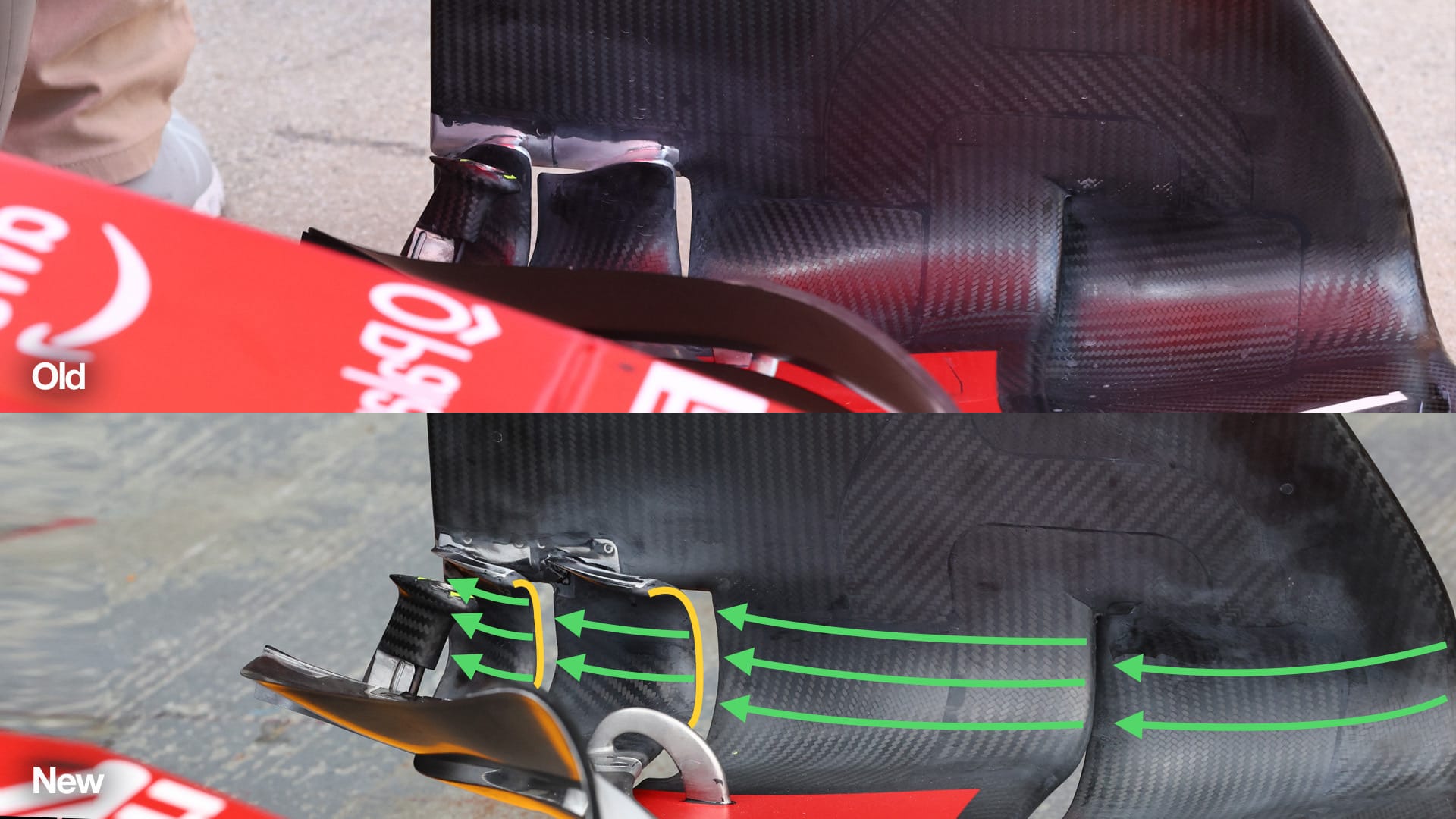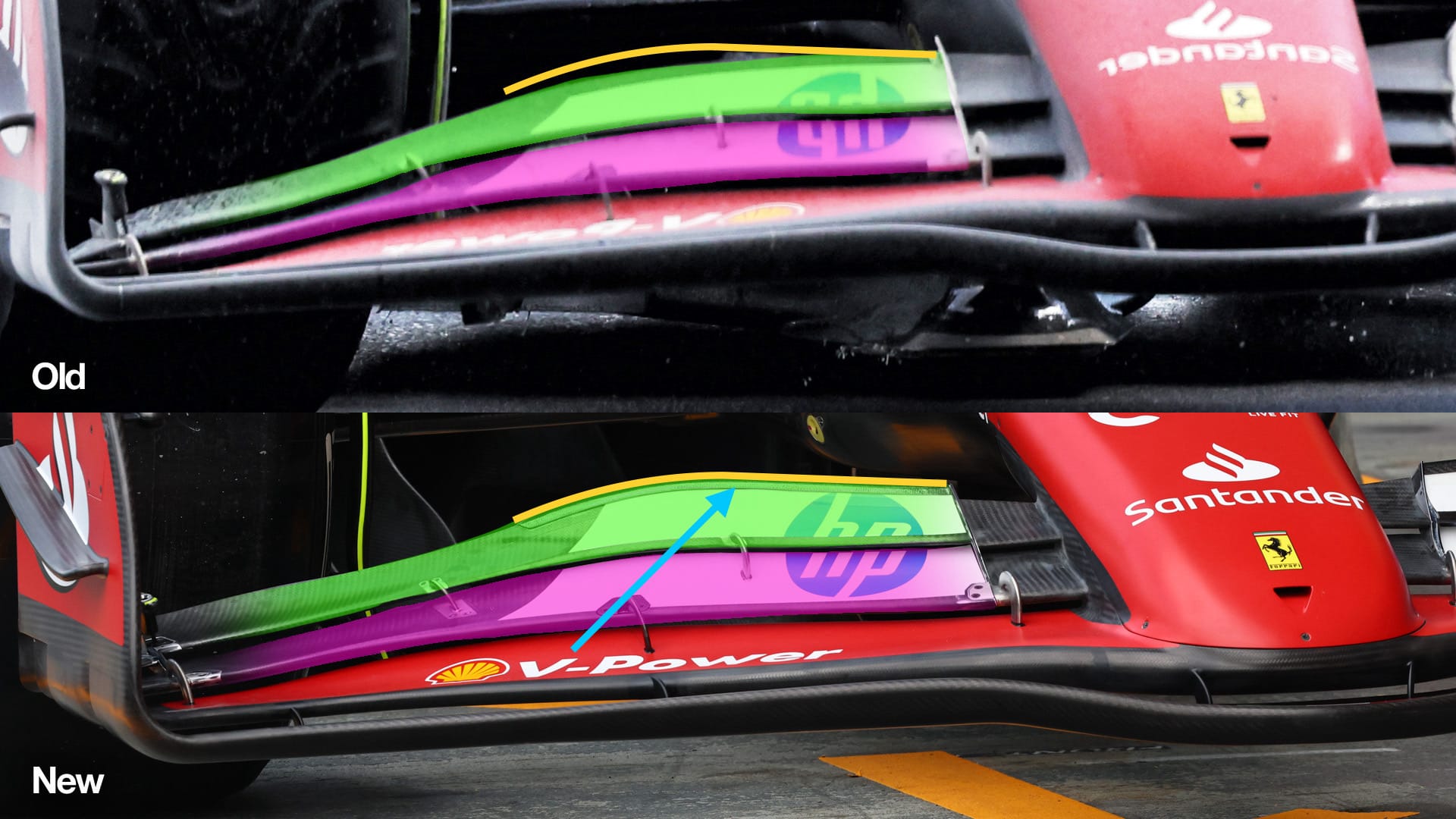Up Next

Ferrari's new Formula 1 front wing, introduced at the Singapore Grand Prix, is both a general front wing upgrade and one focused on the demands of the high-downforce Marina Bay circuit.
The airflow coming off the trailing edge of its rear element is what the rest of the car has to work with. That airflow is optimised by the location and profile of the suspension members, which have a reasonable impact on the flow going into the underfloor, around the sidepod undercut, into the radiator duct and over the top of the sidepod's leading edge.
You need to consider the effect of all of the components and the various interacting airflows. It all needs to work together for the best and most consistent flow going between the front wheels and the side and bottom of the chassis.
This new front wing has some positives and potentially some negatives. If we look at how competitive things are at the front of the grid, it shows that a small step in either direction can have major consequences for your performance in terms of grid position. And as qualifying in Singapore showed, the same can be said for whether the team and drivers get it right.

Let's look at the positives first. The 'scroll' on the outer ends of the two rear elements highlighted with the yellow line have been exaggerated. In other words, Ferrari is trying to generate more outwash while also keeping the outwash lower (green arrows).
This is to keep that outwash airflow connected to the tyre outwash that is displaced as the front tyre rotates on the track surface.
Keeping these two airflows 'talking' to each other makes it more powerful. As it gets pulled around into the area of low pressure, where the tyre comes away from the track surface, it will also reduce tyre drag and improve front wing flow consistency. Steering angle will affect this but that's the same for everyone; you need to turn the steering to get around the corner.
As for the changes to the rear flap trailing edge profile, highlighted with the yellow line, I'm not so sure about this. My yellow line is highlighting the trailing edge of the new flap and then superimposed on the old flap trailing edge so it's easier to see the difference, but I am a fan of the more gradual rear flap drop off that Ferrari had before.

Any time you have a reasonable chord length change in the middle of the wing section, like this new development, you can instigate transverse flow. This transverse flow will alter with car speed, wind intensity and/or turbulence from following another car. It can affect the airflow going to all those parts that are affected by the wake of the front wing, especially the leading edge of the floor. This can in turn affect the consistency of the downforce produced by the underfloor.
It also looks like Ferrari is still trying to find some more low speed front load. The new assembly has a Gurney flap (light blue arrow) along the length of the modified trailing edge.
A Gurney flap is quite a strange thing. Basically, it's a right-angle piece of carbonfibre and is simply adding a trip on the trailing edge of the wing. You could say it's a bit like an increased angle but actually it works very differently: it is more powerful at low speed but similar in high speed, so offers more front grip in slow-speed corners.
It's difficult to say if this has been a step forward or not, but to me the endplate treatment is a positive and the flap trailing edge treatment could very easily lead to a bit of head scratching at Maranello.



